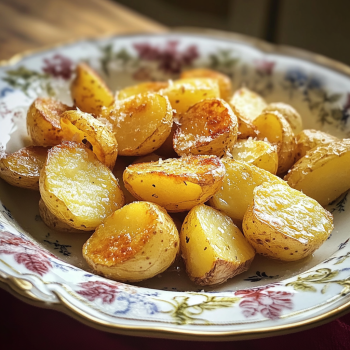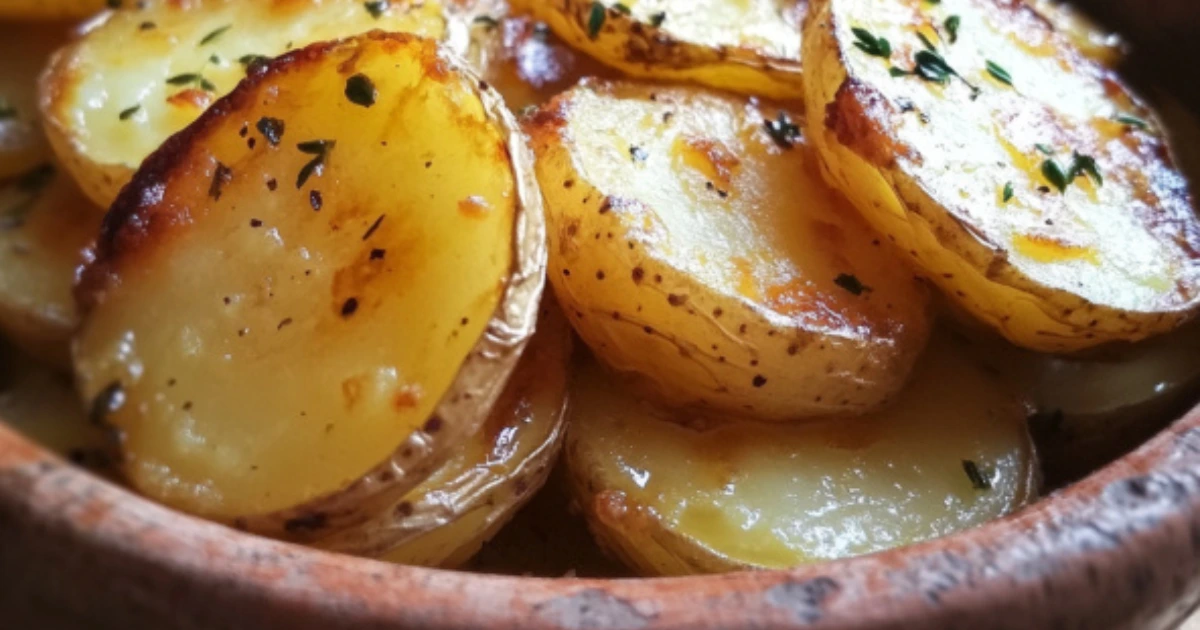What Are Russet Potatoes?
Russet potatoes, commonly known for their distinctive rough brown skin and starchy interior, are a popular variety of potato used in various culinary applications. These potatoes are classified as starchy potatoes, which means they have a high starch content, making them ideal for baking, mashing, and frying. Their large size and russet-colored skin distinguish them from other potato types. In addition to their versatility, russet potatoes are renowned for their ability to absorb flavors, making them a favorite in comfort foods and hearty dishes. Learn more about how to prepare mashed potatoes or best practices for frying potatoes.
Table of Contents
History and Origin of Russet Potatoes
The history dates back to the early 19th century. They were first cultivated in North America, with their roots tracing to the United States. The most widely known variety, the Russet Burbank, was developed in Idaho by a man named Luther Burbank in the 1870s. It quickly gained popularity due to its reliable growth and adaptability to various climates. Since then, russets have become the standard potato for many dishes, especially in North America.
Russet potatoes are now grown all over the world, with regions such as Idaho, Washington, and Oregon being major producers. Their global popularity is a testament to their long history and versatile use in kitchens worldwide.
Physical Characteristics
Russet potatoes are defined by their large, oval shape, which is often irregular. Their skin is thick, brown, and somewhat rough, with a distinct russet texture. You can easily peel the skin or leave it on, depending on the recipe. The flesh inside is pale yellow or white and becomes fluffy and dry when cooked, thanks to its high starch content.
The size of potatoes can vary, but they are typically larger than other potato types. Their unique texture and size make them particularly suited for recipes that require a substantial amount of potato, such as baked potatoes or mashed potatoes. These potatoes are also favored for their ability to hold their shape during cooking, making them ideal for fries and roasted dishes.
Why Are They Called Russet?
The name “russet” refers to the rough, brown skin of these potatoes, which resembles the appearance of rust or a weathered surface. The word “russet” itself means a brownish, reddish color, which is a fitting description of the potato’s skin. This term was first used in the 18th century and has since become synonymous with this particular type of potato. The name reflects the distinctive appearance of these potatoes and has been embraced in the culinary world to refer to the potato variety.
Nutritional Value
Russet are not only versatile in the kitchen, but they also pack a variety of nutrients. While they are best known for their starchy content, they also provide essential vitamins and minerals. A medium-sized russet potato typically offers a substantial amount of dietary fiber, vitamin C, and potassium, making it a valuable addition to a balanced diet.
Moreover, russet potatoes contain a good amount of antioxidants that help protect the body from free radical damage. Despite their starchy nature, when consumed in moderation, russet potatoes can be part of a healthy diet.
Calorie Count and Macronutrients
Russet are an excellent source of energy due to their carbohydrate content. A medium-sized russet potato (approximately 150 grams) typically contains around 110 calories. Of these, the majority come from carbohydrates, which provide energy for the body. are low in fat and contain a modest amount of protein. Here’s a breakdown of the macronutrients in a medium russet potato

- Carbohydrates: 26 grams
- Protein: 3 grams
- Fat: 0 grams
- Fiber: 2 grams
These macronutrients make russet potatoes a great option for athletes or anyone needing a boost in energy.
Vitamins and Minerals
In addition to being a great source of carbohydrates, russet provide several important vitamins and minerals. They are particularly high in:
- Vitamin C: Supports immune function and skin health.
- Potassium: Helps maintain proper fluid balance and muscle function.
- Vitamin B6: Aids in metabolism and brain function.
These essential nutrients make russet potatoes a more nutritious option compared to many other carbohydrate-rich foods.
Comparing Russet Potatoes to Other Varieties
When comparing russet potatoes to other varieties, such as red or fingerling potatoes, several key differences emerge. Russet have a higher starch content, which gives them a fluffier texture when baked or mashed. On the other hand, varieties like red potatoes have a waxy texture, which makes them better suited for boiling and salads.
Additionally, russet tend to have a larger size compared to most other types, which makes them ideal for baking. While other varieties may offer a more delicate flavor and texture, russet potatoes are often the preferred choice for comfort foods like fries, mashed potatoes, and baked potatoes.
Cooking Uses for Russet Potatoes
Russet potatoes are incredibly versatile in the kitchen, offering a variety of uses. Whether you’re baking, mashing, or frying, russet potatoes can handle the heat while delivering a delicious, hearty dish. Their starchy texture is perfect for creating crispy fries, light mashed potatoes, and fluffy baked potatoes.
Baking
One of the most popular ways to cook russet potatoes is by baking them. Their large size allows them to cook evenly and become fluffy on the inside while maintaining a crisp, golden skin. To bake a russet potato, simply wash, poke a few holes, and bake at 400°F (200°C) for 45–60 minutes. For an even crispier skin, rub the potato with olive oil and salt before baking.
Mashing for Creamy Consistency
When it comes to mashing, russet potatoes are the go-to choice. Their high starch content helps them achieve a smooth, creamy consistency. To make mashed potatoes, boil russets until soft, then mash with butter, cream, and seasonings of choice. The result is a velvety mashed potato that pairs perfectly with savory dishes.
Best Fries from Russet Potatoes
For crispy, golden fries, russet potatoes are unmatched. The starch content ensures a crispy exterior while the inside stays tender and fluffy. To make the best fries, cut russet potatoes into strips, soak them in water to remove excess starch, then fry or bake until golden. These fries are perfect for pairing with burgers or enjoying as a snack.
Roasting and Grilling Techniques
Russet potatoes can also be roasted or grilled. For roasting, cut them into wedges, toss with oil, and seasonings, then bake at 425°F (220°C) for 30–40 minutes. For grilling, slice the russet into thick rounds, brush with olive oil, and cook over medium heat until charred and tender. These methods highlight the potato’s natural flavor and make for a delicious side dish.
How to Select and Store Russet Potatoes
Selecting and storing russet potatoes correctly is essential for maintaining their freshness and quality. Proper handling can extend their shelf life and ensure that they are always ready for your next meal.
Choosing the Best Russet Potatoes
When selecting russet potatoes, look for ones that are firm and free from spots, cracks, or sprouting. The skin should be rough, but not excessively wrinkled. Avoid potatoes with any green coloring, as this indicates the presence of solanine, a naturally occurring toxin. Opt for potatoes that feel heavy for their size, as this usually indicates freshness.
How to Store Russet Potatoes for Longevity
To store russet potatoes, place them in a cool, dark, and well-ventilated area. A pantry or a cellar works well. Avoid storing them in the refrigerator, as this can alter their texture and flavor. Keep them in a paper bag, burlap sack, or a perforated plastic bag to allow air circulation. Properly stored, russet can last for several weeks, ensuring you have them available whenever you need them.
By following these guidelines, you can enjoy the best of russet potatoes while preserving their quality for longer periods.
Common Storage Mistakes to Avoid
Storing russet potatoes properly is essential to maintaining their quality and preventing spoilage. Many people make common mistakes that can lead to a shortened shelf life or undesirable texture. For instance, storing russet potatoes in the refrigerator is one mistake to avoid. The cold temperature can alter their starches, turning them into sugars and affecting the taste and texture.
Other mistakes include storing them in direct sunlight or in plastic bags, which can trap moisture and promote sprouting. To avoid these issues, place russet potatoes in a cool, dark, and dry place with good ventilation. Paper or burlap sacks are ideal for storage, as they allow the potatoes to breathe and prevent moisture buildup.
By avoiding these common storage mistakes, you can ensure that your russet potatoes remain fresh and ready for cooking.
Farming and Production
Where Are Russet Potatoes Grown?
Russet thrive in temperate climates with rich, well-drained soil. The largest producers of russet potatoes are the United States, Canada, and several European countries. In the U.S., the state of Idaho is particularly well-known for its russet potato production due to its ideal growing conditions, including volcanic soil and a favorable climate. Other regions, like Washington, Oregon, and Maine, also contribute significantly to the production of russet potatoes.
These regions account for the majority of the russet potatoes grown for commercial purposes, as their soil and climate provide the optimal conditions for these starchy potatoes to grow to their full potential.
Farming Practices for Quality Produce
To ensure high-quality russet potatoes, farmers implement specific farming practices. The first step involves selecting the right seed potatoes, which are grown from disease-free tubers. Farmers carefully monitor soil health, using crop rotation and organic matter to maintain nutrient levels. Regular soil testing also helps adjust fertilizers to ensure optimal growth
Irrigation plays a crucial role in maintaining consistent moisture, while pest management is vital to preventing damage. Farmers also employ integrated pest management (IPM), combining biological, mechanical, and chemical methods to control pests in a sustainable way. By following these practices, farmers can ensure that russet potatoes grow to meet market standards.
Impact on the Economy
The production of russet potatoes has a significant impact on local and global economies. In regions like Idaho, russet potato farming supports thousands of jobs, from farming to packaging, transportation, and retail. This makes it a key contributor to the agricultural industry. Additionally, russet potatoes are a staple in many households, contributing to the success of restaurants, food processors, and potato product manufacturers.
Globally, russet potatoes also play a role in international trade, with large quantities exported to countries around the world. The economic benefits of russet potato farming include job creation, trade, and the support of local businesses, helping to stimulate economic growth.
Common Diseases and Pests
Blight and Its Effects on Russet Potatoes
Blight is one of the most common and destructive diseases that affect potatoes. It is caused by the Phytophthora infestans fungus, which thrives in wet, humid conditions. Blight leads to the rapid deterioration of potato plants, causing leaves to wilt and tubers to rot. If left untreated, blight can result in significant crop losses, as the disease spreads quickly throughout the field.
To combat blight, farmers often use resistant potato varieties, crop rotation, and fungicides. Early detection is crucial in managing the disease and preventing it from spreading. By adopting these strategies, farmers can mitigate the negative effects of blight on russet potato crops.
Pest Control Strategies
Pests, such as aphids, Colorado potato beetles, and wireworms, can pose a serious threat to russet potato crops. These pests damage the plants by feeding on the leaves or tubers, which can reduce the yield and quality of the harvest. Farmers use various pest control strategies to keep these insects at bay
Integrated pest management (IPM) is often employed, where farmers combine biological methods (such as introducing natural predators), chemical treatments, and cultural practices (like crop rotation) to control pests. By monitoring pest populations and applying targeted interventions, farmers can protect their russet potato crops from damage while minimizing the environmental impact of pesticides.
How Farmers Maintain Quality
Maintaining the quality of russet throughout the growing season is essential for producing high-grade potatoes. Farmers ensure the quality of their crops through careful monitoring of soil health, irrigation, and pest management. Regular inspection for diseases and pests also helps to identify issues early, allowing for timely intervention.
Proper handling during harvest is another key factor. Russet potatoes must be carefully dug up to avoid bruising or damaging the tubers. After harvesting, potatoes are sorted, cleaned, and stored in optimal conditions to preserve freshness. These practices ensure that russet potatoes maintain their desired size, shape, and texture, making them suitable for various culinary uses.
Environmental Impact
Water Usage in Russet Potato Farming
Water usage is a critical concern in potato farming, especially in regions where water is scarce. Russet potatoes require a significant amount of water to grow, as they need consistent moisture to produce high-quality yields. However, excessive water use can strain local water supplies and lead to environmental degradation.
Farmers are increasingly adopting water-efficient irrigation systems such as drip irrigation to reduce water waste. These systems allow water to be delivered directly to the roots, ensuring that potatoes receive the moisture they need without over-irrigating. Additionally, using soil moisture sensors helps farmers optimize water usage, ensuring a balance between crop needs and sustainability.
Sustainable Practices
Sustainability is becoming a key focus in russet potato farming. Farmers are implementing practices such as crop rotation to reduce the need for chemical fertilizers and pesticides. By rotating crops, the soil remains healthier and more nutrient-rich, reducing the impact of monoculture farming
Furthermore, many farmers are adopting organic farming practices, avoiding synthetic chemicals and instead using organic fertilizers and pest management techniques. These sustainable practices help reduce the environmental footprint of potato farming and ensure that the land remains fertile for future generations.
Carbon Footprint of Production
The carbon footprint of russet potato farming is influenced by several factors, including the use of fossil fuels in machinery, transportation, and fertilizer production. To mitigate this impact, farmers are exploring renewable energy sources and more efficient farming equipment.
Additionally, carbon sequestration techniques, such as planting cover crops, can help absorb carbon dioxide from the atmosphere and reduce the overall carbon footprint of potato production. As sustainability becomes increasingly important, the farming industry continues to seek ways to minimize environmental harm while maintaining high crop yields.
Frequently Asked Questions
- How do russet potatoes compare to other potato varieties?
Are starchier and larger compared to other varieties like red or Yukon gold potatoes. This makes them ideal for baking, mashing, and frying, while other varieties are better for boiling or making salads.
- Are russet potatoes good for weight loss?
While russet potatoes are relatively low in calories, they are high in carbohydrates. When consumed in moderation and prepared healthily, such as baking or boiling, they can be a part of a balanced weight loss diet.
- Can russet potatoes be stored in the refrigerator?
No, storing russet potatoes in the refrigerator is not recommended. Cold temperatures can convert the starches into sugars, affecting the taste and texture. Store them in a cool, dark, and dry place for the best results.
Conclusion
Russet potatoes are an essential staple in kitchens worldwide, offering versatility in cooking and numerous nutritional benefits. From understanding their origins and farming practices to learning how to properly store them, there is much to appreciate about these hearty potatoes. By avoiding common storage mistakes and recognizing the importance of sustainable farming practices, we can enjoy the benefits of russet potatoes while minimizing their environmental impact. As farming practices continue to evolve, the future of russet potatoes looks promising, offering both economic and environmental advantages.


1 thought on “The Ultimate Guide to Russet Potatoes: Uses, Nutrition, and Farming Practices”